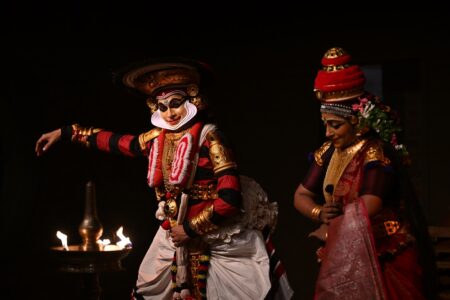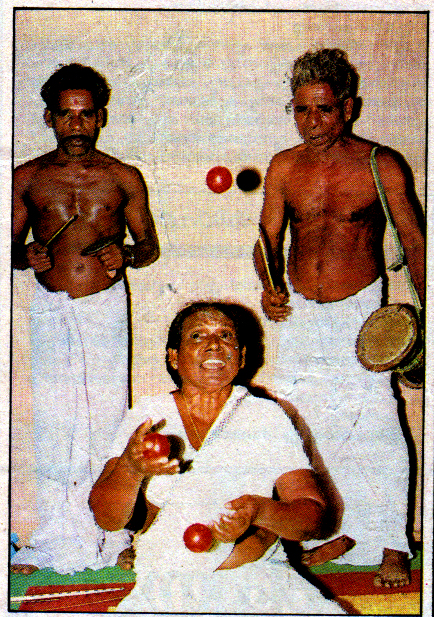Scenography is the art of ‘writing’ the stage space, notes Satyabrata Rout, in his path breaking book Scenography: An Indian Perspective, (Niyogi Books). Rout, a noted scenographer and director of contemporary Indian theatre, has designed and directed more than 75 plays of international repute. He completed his post-graduation in design and direction from the National School of Drama, New Delhi in 1983, and was later associated with various organisations such as Rangmandal, Bharat Bhavan, Bhopal, Theatre-in-Education Company, NSD Extension Programme, etc. He now heads the Department of Theatre Arts at Sarojini Naidu School of Arts and Communication, University of Hyderabad.
With extensive knowledge and decades of experience in Indian theatre and in-depth awareness of the international theatre world, Rout, in his book, pieces together a detailed study on scenography, its context and possibilities in India, and explains the concept of visual theatre in India.
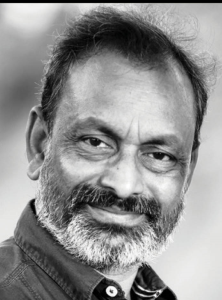
In an e-mail interview with IAR’s Sanjitha Rao Chaini, Rout talks about why it took him more than 12 years to bring out this book, about enhancing visual theatre in India, and explains how a formal curriculum on the subject could help boost its scope across visual art mediums in a culturally diverse India. Excerpts:
What is Scenography?
Theatre from its inception has been developed as an audio-visual medium. The Natya Shastra terms it as ‘Drishya-Kavya’ or visual-poetry, which means, ‘a poetry that is visible in a given space’. Scenography endorses visuals, prepares ground for the poetry to be visible for its audience and creates scope to experience those visuals.
Being an integral component of performance making, scenography precisely brings the opportunity to manifest the visuals through the ‘actor-audience-space’ integrations. The actors in collaboration with the ‘stage-space’ formulate a set of symbolic images to be transposed to the viewers’ mind, expanded and realised through subjective interpretations.
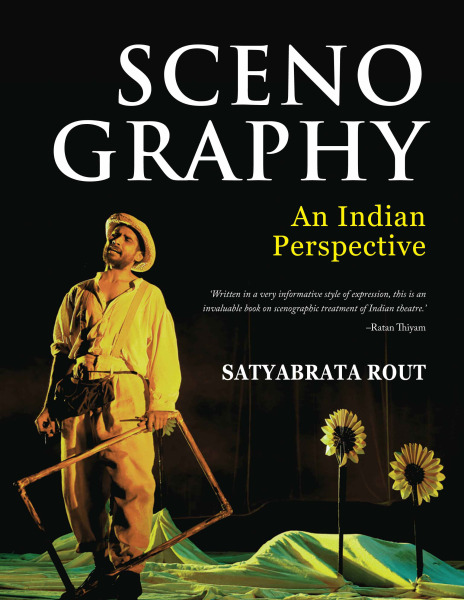
By Satyabrata Rout
576 pages; Rs 3,000; Niyogi Books
Publishing date: January 2022
The responsibility of scenography is to guide the viewers to evoke those experiences with the help of a group of actors who amalgamate and animate the space into a living entity. Thus scenography orchestrates between actors, space and audience by blurring the distinctive line of ‘creative practices’ (Actor’s physical presence, voice, direction, design, text, and viewership) and the ‘technical practices’ (sets, costumes, props, masks, managements, lights, sound, etc.) through a collaborative process.
With actors, it explores these creative and technical practices, and passes the visual experiences to the viewers’ imaginations and initiates the journey along with the dramatic actions. To initiate the audience’s imagination and guide them through this journey, scenography explores possibilities through its various components, such as- text, space, props, masks, sets, lights, sound, and costumes, etc.
Scenography is the art of visual writings of the stage space that is readable through the eyes like paintings, sculptures, and other visual arts in time and space dimensions with difference.
How did the concept of writing this book come to you?
Hardly any documentation available on scenography with an Indian orientation that Indian theatre has been craving for a practical treatise in this regard for quite a long time. Apart from few interviews or memoirs of productions that pop up in the columns of a newspaper supplement or the pages of a magazine, nothing substantial has yet been brought out.
Scenography has been largely redefined in the West by bridging the void between designers and directors in the recent past. Sadly, such an ideology has not yet been re-modelled and chiselled to suit the Indian scenario. Despite having a considerable number of creative theatre makers and scenographers with international acclamation, Indian theatre lacks proper documentation of the works of our masters.
It is at this juncture, the idea of conceiving a book on this perspective germinated in my mind. Among the many things this book pioneers, the most prominent one is the analytical visual descriptions of the masterpieces of Indian play productions.
When I started teaching Design and Direction in various theatre workshops and group theatres after graduating from the National School of Drama in early 1980s, I found most of my students were from the remote corners of India with no background of theatre vocabulary and some were completely ignorant of the western trend of performance design.
At the same time, to formulate a concept out of the popular Indian productions was a difficult task for me. Especially in design, since no reference materials were available related to Indian theatre. So, I started teaching out of my personal working experiences.
In the beginning, it was arduous to develop a definite tone, but gradually over the period the teaching methodology advanced into systematic order.
In the process, I started working on the first draft of this book after I joined the Department of Theatre at University of Hyderabad in 2007. But soon I realised, my experiences and working knowledge are not adequate to bring out an outstanding reference book that covers all aspects of theatre arts and design. The more I referred to the available materials on Indian theatre criticism and productions, the greater was the quest to restart this massive work.
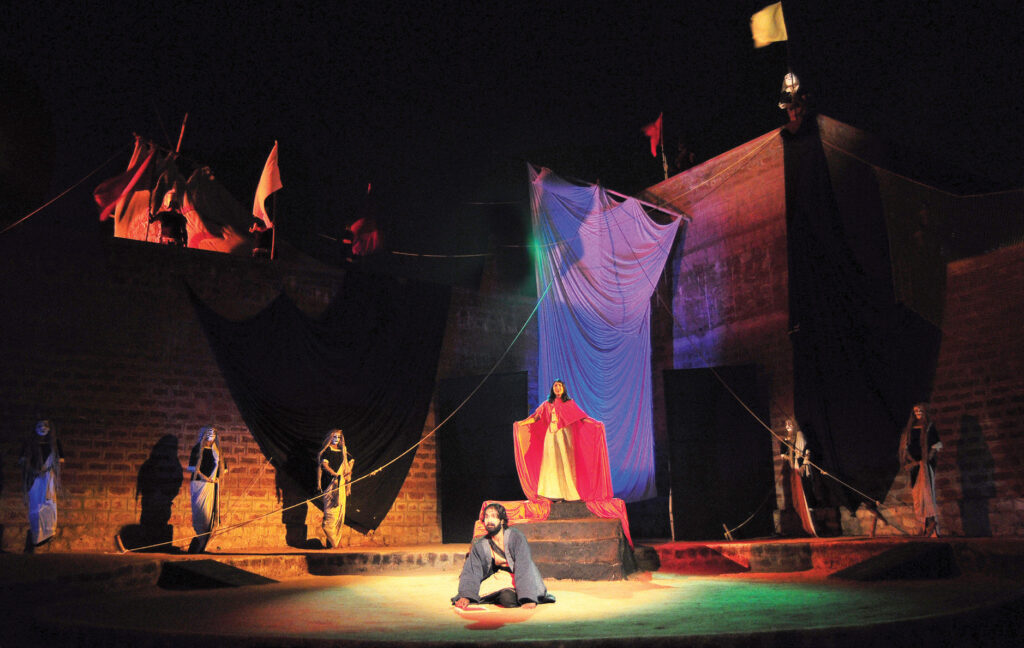
Playwright: Euripides; Scenography and direction: Satyabrata Rout;
Presented by: Department of Theatre Arts, S.N. School of Arts and Communication. University of Hyderabad. Courtesy: Dept. of Theatre Arts
What kind of research did you undertake to write this book?
My work experiences and practices served as the primary source of my research. Fortunately, I have a wide range of fieldwork with almost all Indian eminent practitioners, institutions, group theatres and professional repertories of the country. Also, I have acquired an understanding of Indian classical, traditional and folk theatres and observed them from close proximities.
My long associations with the most eminent theatre personalities of India including Havib Tanvir, Ebrahim Alkazi, BV Karanth, RG Bajaj, Raj Bisharia, Nissar Allana, Ratan Thiyam, KN Panikar, Ankur, Prof. Bansi Kaul, Robin Das, Anuradha Kapoor, Neelam Mansingh Chawdhury, helped me analyse their practicing methods on scenography and performance design.
Moreover, interviewing these personalities opened many undiscovered chapters that were conceptualised in my writings. I also spent hours at libraries and research centres at the NSD, Indira Gandhi Centre for Arts, Natarang Pratisthan, Natya Shodh Sansthan, among others to identify materials related to my research.
My research also included finding written resources from various journals and magazines such as Rang Prasang (NSD) Natarang, Theatre India and The Seagull Quarterly
Repeated visits to ruins and caves, watching various traditional, folk and popular theatres, travelling across the country and analysing their performance design and techniques, and finally assimilating all the materials into writings through a scenographic vision, took more than 12 years for its completion.
How can scenographers contribute to the world of theatre in India?
Unfortunately Indian theatre has not yet completely awakened to such an interesting creative art form. The general practice across the country is yet to assimilate scenography into their productions. Of the few Indian scenographers and designers who have acquired in-depth study of the subject are mainly directors who use to conceive their own performance design.
In most of the practices, scenography remained untouched by labelling it as an expensive venture. Therefore, the potential of scenography has not yet been fully explored in Indian theatre, but is gradually gaining momentum in recent years.

Hindi translation: Dr Pratibha Agrawal.
Scenography and Direction: Satyabrata Rout. Courtesy: Avartan, Hyderabad
How does scenography work in the already established traditional theatre like Yakshagana or Kathakali and/ or in the street theatre formats?
Our Indian traditional theatres use empty space for their presentations. In that performance space, a virtual dramatic space is fabricated out of the actor’s imaginations. Through abstract gestures and gaits the actor creates an environment of indicative spaces in audience mind, in which the viewers visualise the environment in his/her psyche.
For example, in a Kudiyattam performance, during a combat fight between Bhim and Ghatotkatch, the audience visualises the scene with all its ambiences including mountains, forests, trees, etc., along with the physical power of these two meta-physical characters, despite an empty performance space and miming gestures of the actors. This becomes possible with the actor and space integration, and that is the strength of Indian scenography.
Often scenography is created out of improvisations and symbolic use of props and costumes in traditional theatres. In Pandavani (folk theatre of Chhattisgarh region), the singer actor explores the visual aesthetics of a Tambura (a musical instrument), a hand prop in various means to narrate the story. Similarly the entry of actors behind the Yavnika (half curtain) explores the possibilities of scenic grandeurs in Indian classical theatre.
However, things become different in any street or environmental performance. These performances usually adopt and improvise the space. In this case, the existing space is adopted and transformed into dramatic spaces through actors’ interactions with the space and creates a sense of belief in the audience’s mind.
How can we successfully implement scenography in a country like India where an auspicious cultural symbol in a particular geography could be considered ominous in another?
It is true that a scenographer must align with various cultural ethos of the country. But he/she should not be confined to any belief system. Indian cultural ethnicity always remains diverse that gives rise to various cultures and beliefs, which is clearly marked in our rituals and community activities.
The ambience of colours, patterns and forms of our cultural ethos are diverse and, of course, that is the strength of Indian arts and cultures. Being a scenographer, our responsibility is to adopt socio-cultural aesthetics and reinterpret those narratives into visual metaphors in the performance. But one must not stick to any specific culture, idea and ethos, rather work in accordance with the demand of the productions without any prejudice.
How does a scenographer work in a world that is filled with easily accessible mediums such as digital banners and electronic backdrops?
Yes, it is challenging, but working in both mediums remains exciting for a scenographer. Both mediums (digital and live), have their possibilities and limitations, which a scenographer must understand prior to working in these mediums. While the live medium always remains three-dimensional and interactive, the digital medium is two-dimensional with one way communication. This has to be taken into consideration while designing a production.
Having said that, the purpose of scenography is different. It is not to provide any spectacular visuals in front of your eyes and make you a passive observer. Scenography helps create an experience of being within that atmosphere and happenings.
What are your thoughts about reusing and recycling props and the role of a scenographer in managing waste?
Nothing goes to waste in the theatre. Every bit of the elements brings new meaning and adds to the interpretation of the play. The creative endeavour of scenography, each time reinterprets objects, props, sets and costumes, etc., with new contexts.
Contemporary Indian theatre used to exist within financial constraints, for which we are habituated to reuse and recycle the elements of previous productions. Indian scenographers are more exposed to improvisations exploring things in a meaningful way.
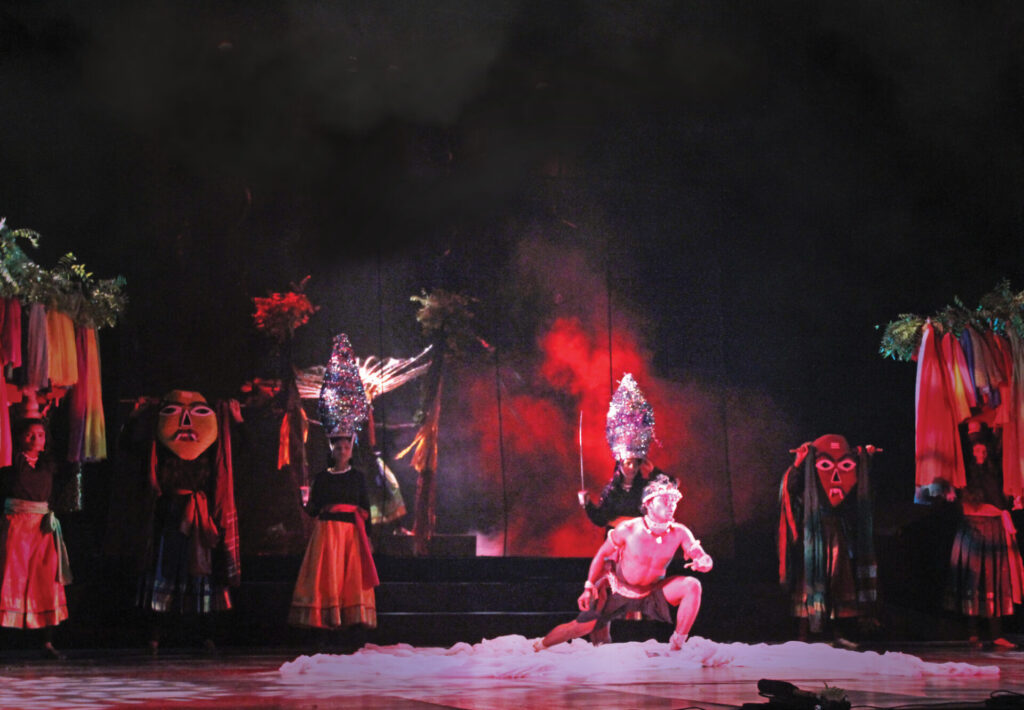
Scenography and direction: Satyabrata Rout.
Courtesy: Adima Kala Tanda, Kolar, Karnataka.
Can there really be a formal curriculum for a subject like scenography without compromising improvisations and creativity?
Scenography is an applied form of art having a direct link with its parental form – visual arts. For a scenographer, it is mandatory to acquire in-depth understanding of painting, sculpture, architecture and other visual mediums. Also, without a skilled background of theatre practice, this cannot be achieved, which means a scenographer needs to be expertise in both the art forms. That is why we have a few scenographers in the world.
Scenography as a formal subject of specialisation has already been introduced in the curriculum in some of the Indian universities and institutions, such as University of Hyderabad and the National School of Drama, etc. Unfortunately, the course often faces many compromising situations due to the lack of trained teachers of scenography in India.
Being a teacher of scenography at the University of Hyderabad, I always felt the scarcity of reference materials and books on Theatre Design and Scenography in the Indian context. Hopefully, this book will inspire young minds to adopt scenography as a prospective career and institutions to introduce Scenography as a major focus of study.
Write to us at [email protected]


